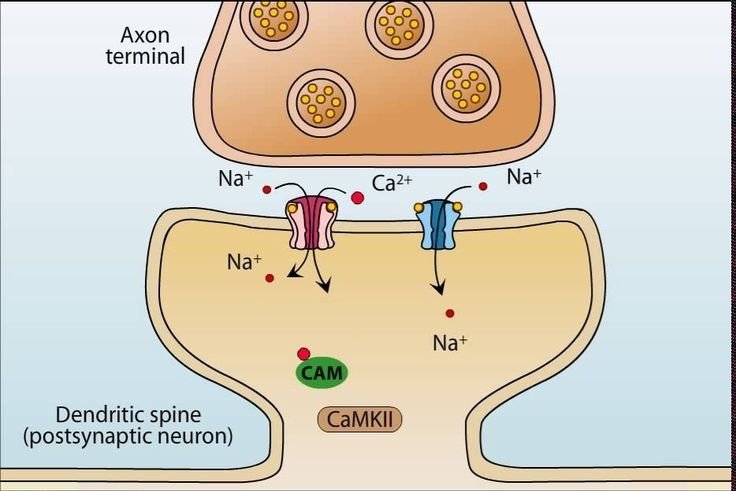Answer: The GABA receptor is a ligand-gated chloride channel. The GABA reversal potential is more depolarized in young animals, meaning GABA will excite the cell.
https://pubs.niaaa.nih.gov/publications/arh313/196-214.htm
GABA is the main neurotransmitter used by the brain. GABA acts as an agonist at the GABA receptor, of which there are two main classes: GABAA and GABAB. In answering this question, we will focus on the ionotropic GABAA receptor.
The GABA receptor is a transmembrane protein that is located at the postsynaptic site. It is a ligand-gated ion channel that changes conformation when an agonist binds to the receptor. This change of conformation reveals a pore that is permeable to small anions, primarily chloride. Upon opening, this pore allows ions to flow back and forth into and out of the cell. These ions carry an electrical charge, and will enter and exit the cell. The membrane potential of the cell moves toward the reversal potential for the given ion.
The reversal potential for an ion is given the name “Eion”, and is a number. In neurobiology, that number is often in millivolts, on the order of 100 mV in some cases, but most often within the range of 100 to -90 mV. The letter E is used since “reversal potential” can be interchanged with the phrase “equilibrium potential.”
In the case of chloride, the reversal potential shifts as the animal develops. In younger animals, the equilibrium potential for chloride might be as depolarized as -40 mV. A reversal potential this depolarized is positive to the action potential threshold of many cells. Thus, when a GABA molecule binds to the GABA receptor and chloride enters the cell, it moves the cell towards the chloride reversal potential, thus causing the cell to fire an action potential.
In adulthood, the reversal potential of chloride changes. It becomes more negative, closer to -65 mV. In this case, when GABA binds to a GABA receptor, the movement of chloride ions cause the cell’s membrane potential to move towards ECl, which is negative to the cell’s action potential threshold. As long as a permeability for chloride exists, it is difficult for the cell to become depolarized enough to fire an action potential.
The change in ECl is due to the age-dependent expression of a chloride transporter called NKCC, the sodium -potassium - chloride cotransporter. The transporter moves 1 sodium ion, 1 potassium ion, and two chloride ions into the cell. Because it moves two positive ions and two negative ions at the same time, it is electroneutral.
There are two classes of NKCC proteins. The NKCC1 protein is found in young animals but not older animals. When NKCC1 is active, the intracellular concentration of chloride is increased. Using the Nernst equation, it can be calculated that when intracellular chloride is increased, the reversal potential is shifted to more positive potentials. Over time, the expression of NKCC1 decreases, and this causes ECl to shift to a more negative potential.










